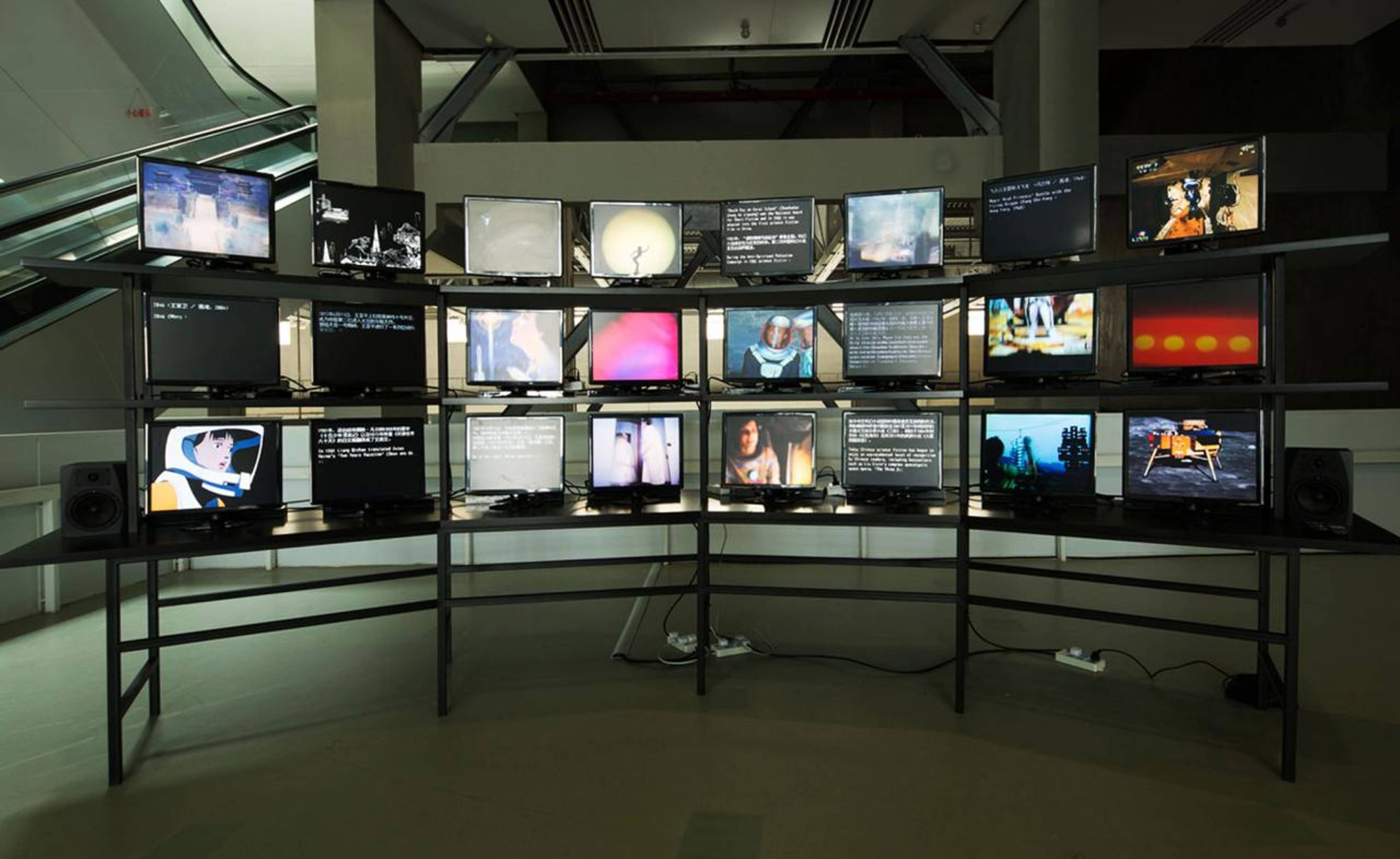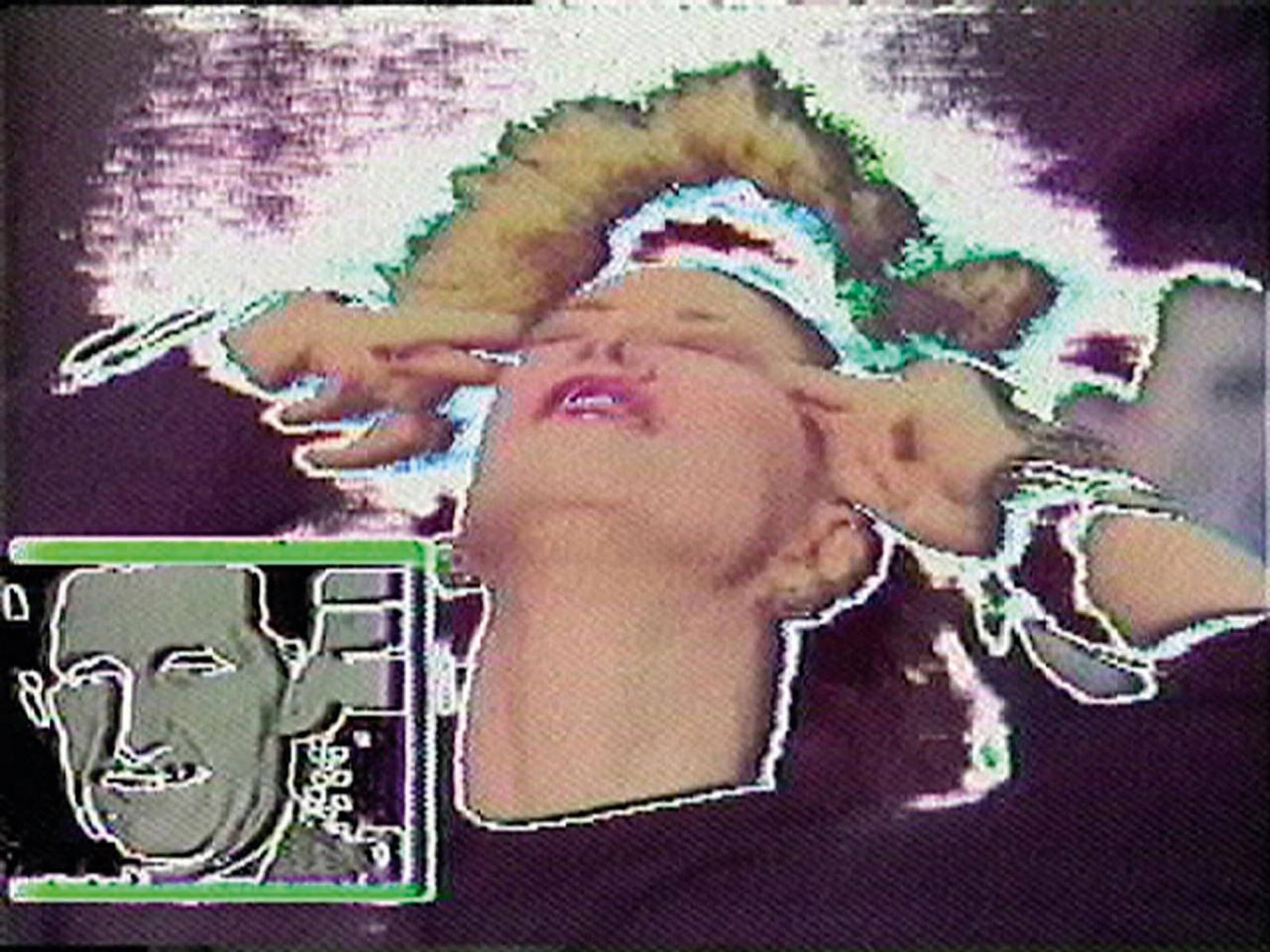What was video art? It didn’t even last a century. If you were born before 1967 – when Sony introduced the Portapak, the first consumer handheld video camera – you technically outlived the video. Back then, video had an indexical link to reality: light’s signature on reels. Now, we slurped everything, including film and animation, into the soupe that is “the moving image,” which now includes generative AI – such as Refik Anadol’s “moving image” Unsupervised (2023), which ominously morphs and re-morphs on screen in the MoMA lobby.
Less of a comprehensive survey than a postmortem, MoMA’s blockbuster exhibition of video art “Signals: How Video Art Transformed the World” is curated by Michelle Kuo and Stuart Comer primarily from works in the museum’s collection. If the left politicizes aesthetics, and the right aestheticizes politics, “Signals” lands decisively on the former, eschewing decoration and entertainment to present an aggressively revisionist history of how video has been used to defend democracy, epitomized by Anwar Kanwar’s The Torn First Pages (2004-8) which features images from Myanmar’s decades-old pro-democracy movement. Truly global in scope, “Signals” includes artists from Lebanon, Brazil, Croatia, Turkey. In dialectic with exhibitions like The Whitney Museum’s “Dreamlands: Immersive Cinema and Art, 1905–2016” (2017), which focused on immersion and illusion, “Signals” is decisively political.
View of “Signals: How Video Art Transformed the World,” MoMA, 2023. Photo: Robert Gerhardt
Many works straightforwardly document protest movements, such as video recordings of Japanese demonstrators protesting against the Chisso Corporation, responsible for toxic waste (Fujiko Nakaya’s Friends of Minamata Victims — Video Diary, 1972). Others exploit pirate media to counter hegemonic narratives from centralized television broadcasting, such as an interview with Fred Hampton, the deputy chairman of the Illinois chapter of the Black Panthers shown on pirate TV, (Videofreex’s Fred Hampton: Black Panthers in Chicago, 1969). In fact, I found the promotion of western-style democracy in the exhibition so heavy-handed that I wondered if exhibitions at MoMA were still supported by the CIA in 2023. (My educated guess: probably.) In Dara Birnbaum’s Tiananmen Square: Break-In Transmission (1990), tentacle-like arms hang from the ceiling holding LCD screens displaying official broadcasted footage from the student-led pro-democracy protests that took place in Beijing in 1989. One screen shows a Taiwanese music video made in solidarity with the protests, while another shows footage from the US news of the protesters marching, which was of course censored in China. The work exploits the breakage between what is shown and what is repressed (with Birnbaum’s sculptural apparatus drawing attention to the hardware of these seeming illusions of light).
Unlike film, often produced by a crew for entertainment, video (film’s populist sibling) more readily sits in a complex network of power that includes the television, the state, the civilian, and the artist – whose narratives and counter-narratives are all competing for the public’s attention. Harun Farocki and Andrei Ujică’s harrowing and surgical 106-minute video – ok, realtalk, this is a film – Videograms of a Revolution (1992) compiles found video footage from each of those actors (protestors, state television) filmed during 1989 Romanian Revolution, when protestors took over the state-run television, and sentenced the deposed dictator Nicolae Ceaușescu’s and his wife to death by firing squad under charges of genocide. The closing shot is a close-up of Ceaușescu and his wife’s dead faces, broadcast on TV to men clapping. The work interrogates what’s happening in the video, as well as what’s happening around the video: who is broadcasting it and to whom, and how that transmission rarely arrives without violence.
Ming Wong, Windows on the World (Part 2), 2014, twenty-four-channel standard-definition video (color, sound; varying durations), twenty-four flat screen monitors, MDF, wood, and steel, 165 × 400 × 75 cm. © 2022 Ming Wong
American viewers will have the 2020 George Floyd uprisings close to mind, when a video of Black death had mobilized a global protest movement. Black liberation is explicitly foregrounded in “Signals,” as numerous works investigate the video of the Black body – in joy, in pain – and how it is circulated for entertainment, surveillance, accountability, or noise. It was Comer’s decision to screen Farocki’s videofilm alongside a video of Black uprising in the UK: Black Audio Film Collective and John Akomfrah’s Handsworth Songs (1986) on the 1985 Handsworth riots. In fact, Comer had screened the latter film at the Tate while he worked there as a film curator, in 2011, right as the race riots began percolating across the city. Tickets sold out in two minutes.
The “Signals” curators seem hyper-vigilant of the problem of Black visibility. Opting out of a vicious cycle, which “begins with surveillance, sparks with the police brutality clip, ignites into a riot, and loops,” writes Aria Dean in her catalog text, the exhibition ends on a note of refusing visibility, or evading it. Sandra Mujinga’s video Pervasive Light (2021), which shows a Black woman’s figure (Mariama Ndure) disappearing in and out of the black background, while adjusting her black hooded coat whose limned contours reflect and deflect light. Here was a woman using fashion, a medium that goes almost entirely dismissed in the art world today, to modulate between visibility and invisibility, and she was in command.
Black Audio Film Collective, John Akomfrah, Handsworth Songs, 1986, 1-channel 16mm color, film, sound, 58:33 min
“Many people by now walk away from visual representation,” wrote Hito Steyerl in 2012, arguably one of today’s most influential video artists. “Their instincts (and their intelligence) tell them that photographic or moving images are dangerous devices of capture: of time, affect, productive forces, and subjectivity. They can jail you or shame you forever.” This doesn’t just apply to the Black subject, but nearly everyone with access to the internet. Steyerl’s prophecy is renewed with urgency today, when the moving image no longer documents but generates video, made not out of light but data, to perpetuate a social media ecosphere of infinite jest and a white-supremacist justice system of infinite death. Then let the machines eat data. What if the AI moving-image – all those text-prompted videos, or Anadol’s ghostly machine endlessly iterating – was used to flood the system, shock and hijack the corporate and state apparatuses jailing and shaming, so that we, as humans, can go off-screen and do whatever we want? I’m reminded of a TikTok I saw recently where a user analyzed, frame by frame, one of those videos we all saw of Britney Spears dancing in her home on Instagram. In a split-second, we can see a glitch where what is apparently a face-filter of Britney’s face stutters, and the body-double’s face is revealed. It wasn’t Britney. It hasn’t been Britney. So where is she?
She’s free.
Martine Syms, Lessons I–CLXXX, 2014–18, 180 videos (color, sound), 90 min (30 seconds each). © 2022 Martine Syms
Nam June Paik, Good Morning Mr. Orwell, 1984, video, color, sound, 38:00 min
___
“Signals: How Video Art Transformed the World”
MoMA, New York
5 Mar – 8 Jul 2023







